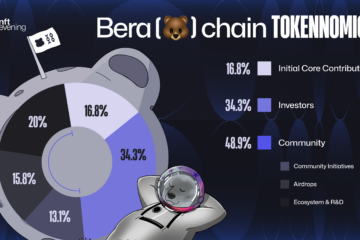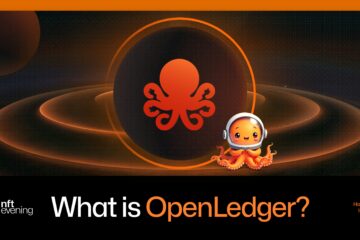With a strong focus on unlocking value from major assets like BNB and BTC, KernelDAO is not only capturing investor interest but also shaping the broader conversation around decentralized governance and sustainable token utility.
As a restaking narrative protocol, Kernel DAO price prediction seems to be essential for investors who are looking for the future outlook of this project.
The Appeal of Kernel DAO
KernelDAO is gaining attention as a leading restaking protocol on the BNB Chain. With over $1.6 billion in total value locked (TVL), it enables users to restake BNB and BTC for extra rewards, enhanced security, and governance participation.
Its native token, KERNEL, serves a dual purpose: it functions both as a governance asset and a reward mechanism. With community-driven tokenomics, airdrop incentives, and integrated insurance, KernelDAO is positioning itself as a core player in the restaking space.
Remember how EigenLayer ignited the restaking narrative on Ethereum? Binance is now fueling that fire with its recent Launchpool initiatives, and as a native protocol on BNB Chain, KernelDAO is smack-dab in the middle of Binance’s vision for modular security and appchain innovation.
But that’s not all – KernelDAO also has the backing of YZI Labs, a strategic investor with a proven track record of getting in on the ground floor of successful Binance ecosystem projects. And get this: even CZ himself has amplified the restaking conversation around KernelDAO, adding serious weight and validation within the BNB Chain community. It looks like KernelDAO is primed to capitalize on this exciting resurgence
These factors help KernelDAO stand out. It’s not just another restaking project but a potential infrastructure backbone for BNB Chain’s modular future.
Read more: What is Kernel DAO?


Source: DeFiLlama
Kernel DAO Tokenomics
Token Allocation
- Community & Rewards: 55%
- Team: 20%
- Private Sale: 20%
- Ecosystem Fund: 5%


$KERNEL Tokenomics – Source: Kernel DAO
The initial circulating supply is 162,317,496 tokens (16.23% of 1,000,000,000) which is a low float. This evokes parallels with prior instances of low float, high FDV token scenarios is now common among Binance listing projects such as StarkNet (STRK) or ZKsync (ZK). Still, it often draws criticism.
In 2023-2025 crypto markets, this structure tends to inflate early valuations and spark post-TGE corrections. Selling pressure rises as token unlocks begin.
KERNEL Airdrop Allocation
KernelDAO emphasizes community rewards. It allocates 60% of $KERNEL to community and ecosystem incentives. This includes 55% for rewards, 20% for airdrops, and 35% for future incentives.


Source: Kernel DAO
KERNEL Price Prediction
Market comparison
In the rising narrative of restaking, three major protocols have captured attention through high-profile Binance listings: KernelDAO (KERNEL), Solayer (SLYR), and Renzo (REZ). While all three fall under the same restaking category, they serve different ecosystems and follow distinct strategies.
Projects Comparison


To understand KernelDAO’s potential, it’s crucial to compare it with other prominent players in the restaking space – Solayer and Renzo, both of which also launched via Binance Launchpool in the same cycle.
Solayer is a restaking layer purpose-built for the Solana ecosystem. It offers modular validator infrastructure that enables appchains and rollups to inherit Solana’s base-layer security. Though still in the early stages of adoption, Solayer is strategically positioned to grow alongside Solana’s evolving modular narrative. According to data, LAYER launched at 0.816 USD, giving it a TGE FDV of 816 million USD. It later reached an ATH of 1.58 USD, translating to an ATH FDV of 1.5 billion USD.
Renzo, meanwhile, is the clear leader in Ethereum restaking and currently the most recognized Liquid Restaking Token (LRT) provider in the EigenLayer ecosystem. It allows users to stake ETH via ezETH and earn dual rewards – from both traditional ETH staking and actively validated services (AVS). With over 3.5 billion USD in TVL and strong DeFi integrations, Renzo quickly established itself as a dominant force. However, its token design drew criticism due to a relatively low community allocation – just 32% of REZ for users. REZ launched at 0.02 USD with a TGE FDV of 240 million USD and reached an ATH of 0.278 USD, bringing its ATH FDV to approximately 2.78 billion USD.
In contrast, KernelDAO offers a fresh take on restaking: supporting BNB and BTC assets, integrating a native insurance mechanism, and allocating a generous 55% of its token supply to the community. While its value proposition is strong, adoption has been relatively slower – partly due to the fragmented nature of BNB Chain’s DeFi ecosystem compared to Ethereum or Solana.
Despite KernelDAO’s robust fundamentals and a TVL already exceeding 1.6 billion USD, its TGE price of 1.80 USD gives it an FDV of approximately 1.8 billion USD, a valuation that feels out of sync with current market conditions.
KERNEL Price Prediction
When compared to Solayer’s 816 million USD TGE FDV and Renzo’s more modest 240 million USD, a more reasonable launch range for KERNEL might have been between 0.4 USD – 0.6 USD, placing its FDV closer to 400M – 600M USD. This would better align with broader market sentiment, especially in a low-liquidity environment where investor risk appetite remains subdued.


Moreover, as mentioned, low float and high FDV tokenomics – common in recent Binance Launchpool projects, have drawn criticism. In bearish markets, this structure often inflates early valuations and triggers post-TGE corrections as unlocks increase selling pressure.
 Bitcoin
Bitcoin  Ethereum
Ethereum  Tether
Tether  XRP
XRP  USDC
USDC  Lido Staked Ether
Lido Staked Ether  TRON
TRON  Dogecoin
Dogecoin  Cardano
Cardano  Figure Heloc
Figure Heloc  WhiteBIT Coin
WhiteBIT Coin  Wrapped stETH
Wrapped stETH  Bitcoin Cash
Bitcoin Cash  Wrapped Bitcoin
Wrapped Bitcoin  USDS
USDS  Chainlink
Chainlink  Wrapped eETH
Wrapped eETH  Binance Bridged USDT (BNB Smart Chain)
Binance Bridged USDT (BNB Smart Chain)  LEO Token
LEO Token  WETH
WETH  Hyperliquid
Hyperliquid  Monero
Monero  Stellar
Stellar  Zcash
Zcash  Coinbase Wrapped BTC
Coinbase Wrapped BTC  Ethena USDe
Ethena USDe  Litecoin
Litecoin  Sui
Sui  Avalanche
Avalanche  Hedera
Hedera  Shiba Inu
Shiba Inu  sUSDS
sUSDS  USDT0
USDT0  Dai
Dai  Mantle
Mantle  Toncoin
Toncoin  World Liberty Financial
World Liberty Financial  PayPal USD
PayPal USD  Cronos
Cronos  Ethena Staked USDe
Ethena Staked USDe  Uniswap
Uniswap  Polkadot
Polkadot  MemeCore
MemeCore  Aave
Aave  Bittensor
Bittensor  USD1
USD1  Canton
Canton  Rain
Rain 


